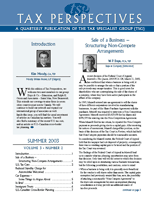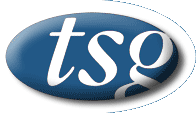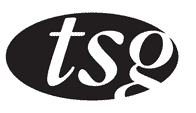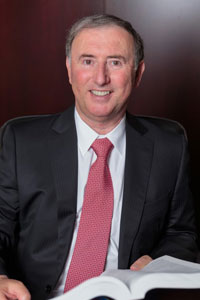
PDF Format
 Issue Contents Issue Contents
 All Issues All Issues
Summer 2003
Volume 3, Number 2
The information in Tax Perspectives is prepared for general interest only. Every effort has been made to ensure that the contents are accurate. However, professional advice should always be obtained before acting on the information herein.
Car Expenses — Some Things to Argue About
By Michael Cadesky, FCA, TEP
Cadesky and Associates LLP (Toronto)
The Canada Customs and Revenue Agency (CCRA) takes the position that the trip from home to the office and back is personal, not business travel. This is important for how much may be claimed for car expenses and the reduced standby charge. But is this policy correct? How and what constitutes personal travel has never been clear. Is usage based on time, mileage, or a combination? Either way, the results will be the same if personal travel and business travel have the same characteristics. But, if you are stuck in traffic during the week, and go out of town by highway to the cottage on most weekends, time usage may produce a very different result to that of mileage. Decades ago, when the original policy concerning business versus personal usage was devised, there were no such things as car phones, personal computers, satellite navigation systems, voice activation, emails, or the internet. But things have changed. Consider the scenario below, which may occur some time in the near future. Tom is a business executive who uses his car for his employment-related duties. Most mornings, he gets into his car and, before leaving, checks his emails, which are sent to him over the internet through a satellite link to the car's built-in P.C. He responds to one urgent email by voice activation before driving off. On the way, Tom is notified that he has two more emails, one of which is urgent. He pulls over for a moment to read that email. He dictates a quick memo to his secretary, and transmits it through his wireless internet connection. Tom returns one phone call on his voice-activated phone and routes two voice mails around the office. Tom's navigation unit shows his appointments for the day, the quickest routing from one location to another, and how busy the major highways are. He then listens to a daily briefing from his company, sent over the internet in a voice-digitized format. Tom's car logs every journey on its PC, recording the time and the mileage. Tom indicates on each occasion whether the trip is business or personal. Tom has an appointment with CCRA the following day in which he proposes to argue that his business usage of the car is 86%, and that his travel from home to the office and back is business travel. He proposes a calculation basis that uses an average of time spent and distance traveled. If Tom is unsuccessful, he will take the matter to court. (He is no longer prepared to accept that his trip from home to office is personal.) Along with the car came $8,000 of computer hardware and software. Tom leases the car and has deducted the lease payments for this equipment in full.
| 




